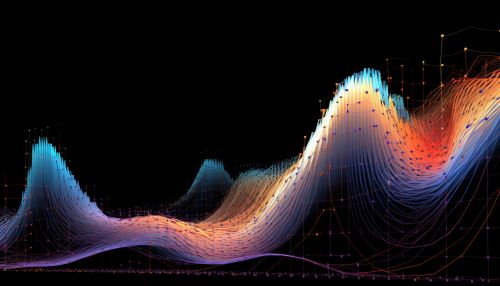Stochastic process
Introduction
A stochastic process is a mathematical object usually defined as a family of random variables. Historically, the random variables were associated with or indexed by a set of numbers, usually viewed as points in time, giving the interpretation of a stochastic process representing numerical values of some system randomly changing over time, such as the growth of a bacterial population, an electrical current fluctuating due to thermal noise, or the movement of a gas molecule.
Definition
Formally, a stochastic process is a probability model used to describe phenomena that evolve over time or space. More specifically, a stochastic process is a collection of random variables indexed by some mathematical set, conceived often as a sequence of random variables representing the evolution of some system of random values over time.
Types of Stochastic Processes
There are several specific types of stochastic processes that are used frequently in specific areas of science. These include:
Markov Processes
A Markov process is a stochastic process that satisfies the Markov property. This means that the future state depends only on the current state and not on the sequence of events that preceded it. This specific kind of "memorylessness" is called the Markov property.
Gaussian Processes
A Gaussian process is a stochastic process such that every finite collection of those random variables has a multivariate normal distribution. In other words, each finite linear combination of them is normally distributed.
Wiener Processes
A Wiener process is a real valued continuous-time stochastic process named in honor of Norbert Wiener. It is often called standard Brownian motion process or Brownian motion due to its historical connection with the physical process known as Brownian movement or Brownian motion originally observed by Robert Brown.
Poisson Processes
A Poisson process is a stochastic process which counts the number of events and the time that these events occur in a fixed time interval. The time between each pair of consecutive events has an exponential distribution with parameter λ and each of these inter-arrival times is assumed to be independent of other inter-arrival times.
Applications
Stochastic processes are widely used in the modeling of systems and phenomena where uncertainty and randomness are present. They are the mathematical foundation for many disciplines and areas of study, including signal processing, queueing theory, mathematical finance, and genetic evolution.
See Also


